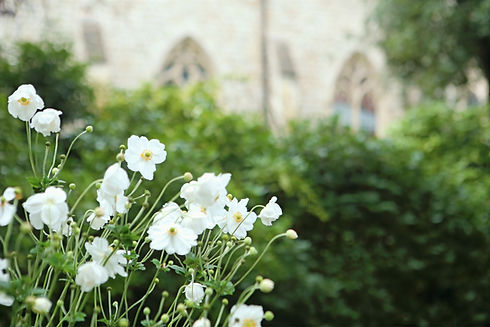
History
The Boltons
The area is believed to have been named after William Bolton (or Boulton) who bought the land in 1795. Twelve years later, Bolton sold the land between the Old Brompton Road and the Fulham Road to the confectioner James Gunter. Gunter died in 1819 and his son Robert, a wealthy Breconshire landowner, inherited the estate.


Construction of the gardens
Up until the mid 19th century, the site of the enclosures and the surrounding area was a farm with the grounds used as market gardens. When Robert Gunter inherited the estate, he added lands and soon began to lease parcels for housebuilding, eventually redeveloping the site where The Boltons Gardens Enclosures sits between 1850-1860. The gardens were laid out in May 1849 when an unusual vesica-shaped layout of houses in facing crescents, now known as The Boltons, was designed by architect and surveyor George Godwin Jr, as the centrepiece of the Gunter estate. The land in the centre of the crescents was donated by Gunter and was intended to be a ‘plantation’, bisected in the middle by a church.
Church of St Mary The Boltons
In 1850, the church of St Mary was the first building to be erected in The Boltons, followed by the 28 houses that make up the crescent. The gardens adjacent to the church were promoted as a valuable added amenity for the local residents. A sale advertisement from the late 1850s, for a ‘villa residence’ in The Boltons, touted the privilege of admission to the 'select Promenade and Ornamental Pleasure Grounds' to the North and South of the church, for which the ground landlord added £2 to the ground rent.


Garden Design
The design and planting of the garden enclosures has gradually evolved over time. Initially, the two halves were designed to be matching and symmetrical, with two central paths running towards the church from the far ends of the vesica. Later records, from the 1860s, have shown more ornate layouts which generally consisted of an open lawn with central paths and triangular flower beds, bordered by trees and shrubberies. The church appeared to be railed off from the gardens, and the gardens are secured by iron railings around its perimeter, screened by planting on the garden side. Plans from the 1890s differed again, with the South Garden retaining a similar layout but the configuration of the lawns of the North Garden had changed with the removal of the central path.
The Buildings
In the first half of the 20th century, some of the large houses overlooking The Boltons Garden Enclosures were converted to flats, others were adapted for institutional use. For much of the 20th century, numbers 20 and 21 The Boltons served as Our Lady’s convent, which was run by the Franciscan missionaries of Mary, together with a girls' hostel next door. For 15 years after World War II, the phrase "going to the Boltons" was used by locals as an expression for going to school. On either side of Boltons Place were two schools: Virgo Fidelis RC Junior Girls School and state primary Bousfield School, which remains. In 1947, 29 The Boltons, on the junction of Tregunter and Gilston Roads, became a satellite site for the nearby Lycée Français de Londres, providing space for three junior classes. As the main school in South Kensington expanded in the late 1950s, the name changed to Lycée Français Charles de Gaulle, and the location was consolidated. The building in The Boltons became surplus to the Lycée’s requirements and was reinstated as a single-family residence. Today, many properties have retained, or been returned to, their original purpose as single-family houses. A number of famous figures have been resident in the houses in The Boltons, including Douglas Fairbanks Jr, Sir William Gilbert (one half of Gilbert and Sullivan), Madonna and Jeffrey Archer.


World War II
During World War II, the original iron railings surrounding the church and the gardens were removed as part of the war effort; these were replaced in the 1970s with donations from the residents of The Boltons. A wooden play structure was added to the South Garden in the early 2000s to provide an added amenity for young children, and in early 2021, the entry gates were updated with an electronic fob system.
Conservation
The gardens are the heart of The Boltons Conservation Area which was set up in 1970 by the local authority to uphold the architectural character and appearance of the area. To protect the gardens and to continue to preserve its use for the community, The Boltons Garden Enclosures was established and registered with the Charity Commission in 1984. Unlike other communal garden squares that are reserved solely for the use of residents overlooking the square, the gardens are available to the wider community living within The Boltons Conservation Area and the funding to maintain its unique character is raised through membership fees and donations.

